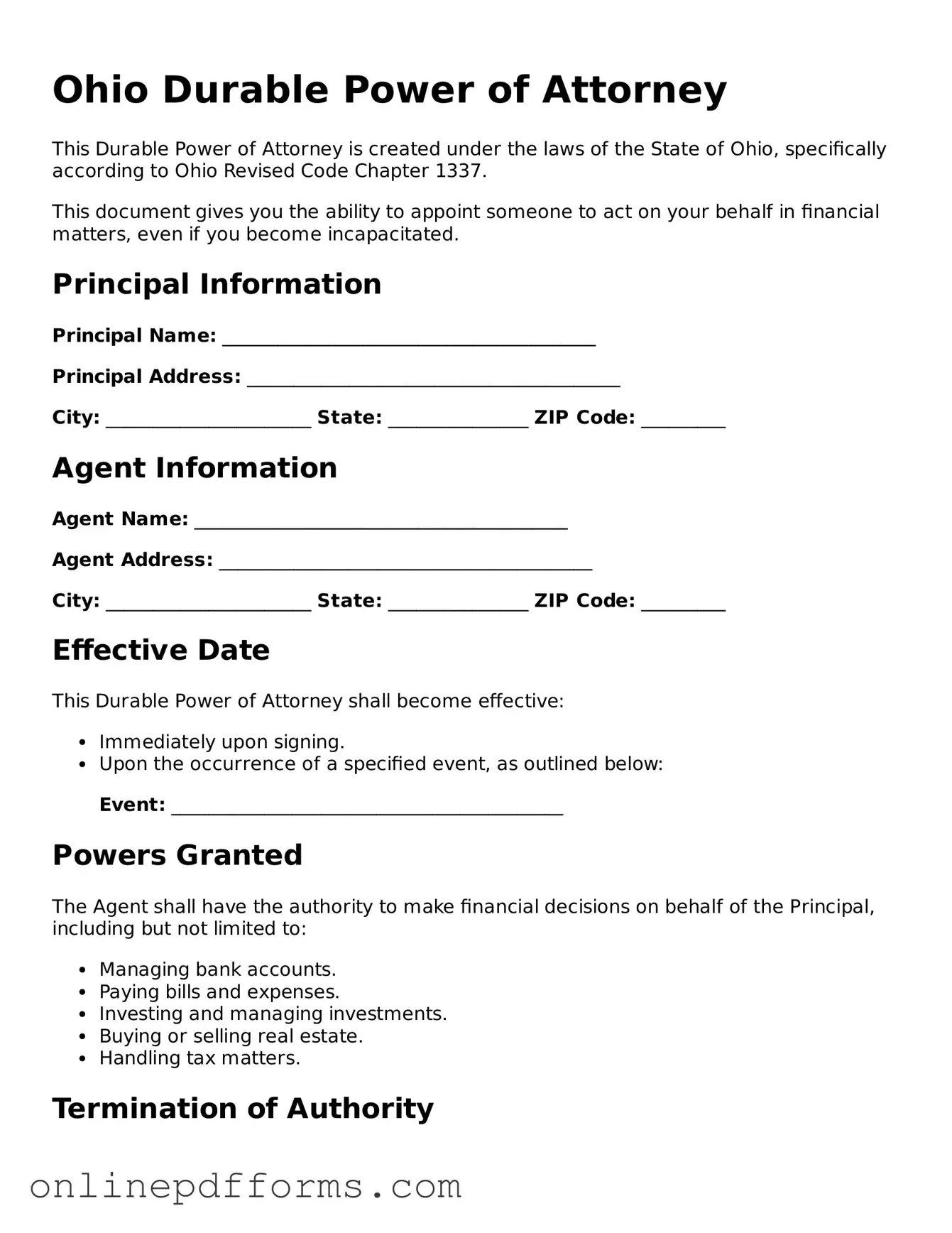The Ohio Durable Power of Attorney form is similar to a General Power of Attorney. Both documents grant authority to an agent to make decisions on behalf of the principal. However, a General Power of Attorney typically becomes invalid if the principal becomes incapacitated, while the Durable Power of Attorney remains effective even in such situations. This distinction is crucial for individuals who want their agent to continue managing their affairs if they can no longer do so themselves.
Another document that shares similarities is the Healthcare Power of Attorney. This form specifically allows an individual to designate someone to make medical decisions on their behalf. Like the Durable Power of Attorney, it remains effective if the principal becomes incapacitated. The key difference lies in the focus; the Healthcare Power of Attorney is limited to health-related decisions, while the Durable Power of Attorney can cover a broader range of financial and legal matters.
A Living Will is another document that is often compared to the Durable Power of Attorney. While a Living Will outlines an individual's wishes regarding medical treatment in end-of-life situations, it does not appoint someone to make decisions on their behalf. In contrast, the Durable Power of Attorney allows for a designated agent to make various decisions, including those related to healthcare, but it can be more comprehensive in scope.
The Revocable Trust shares some characteristics with the Durable Power of Attorney. Both documents allow individuals to plan for their future and manage their assets. A Revocable Trust can help avoid probate and allows the grantor to retain control over their assets during their lifetime. However, unlike the Durable Power of Attorney, which grants decision-making authority to an agent, a Revocable Trust places assets in a trust for management by a trustee.
For those navigating the complexities of legal documents, understanding the nuances of various forms like the Statement of Fact Texas is essential. This formal document, utilized for certifying pertinent details such as vehicle transactions in Texas, mandates accurate information submission to prevent serious legal repercussions. By carefully completing the form, individuals can ensure compliance with state regulations and avoid penalties for misinformation. To assist in this process, you can read more about the document to facilitate proper understanding and completion.
The Financial Power of Attorney is closely related to the Durable Power of Attorney, as both documents enable an agent to handle financial matters. The Financial Power of Attorney may be limited to specific financial transactions, while the Durable Power of Attorney can encompass a wider range of powers. This allows for more flexibility in managing the principal's affairs, especially if the principal becomes incapacitated.
Lastly, the Guardian Appointment document is another form that can be compared to the Durable Power of Attorney. This document is used to appoint a guardian for an individual who is unable to care for themselves. While the Durable Power of Attorney allows someone to manage financial and legal decisions, the Guardian Appointment focuses on personal care and welfare. Both documents aim to protect the interests of individuals, but they serve different purposes in the realm of decision-making.
